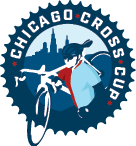Right Versus Left Side Power…..A Study
Our friends at Verve hooked my training rig (CAAD10) up with a 175 mm InfoCrank set in January of last year. The InfoCrank is a hyper-accurate crank based power meter with independent right and left power readings.
The initial experience was an eye opener; the left leg was pushing 40-45% of the overall power while the right side was doing 55 – 60% of the work. As a cycling coach this situation offered a unique opportunity to see how much performance can be gained simply by evening out power in the right and left sides. It took a full year to get within a couple of percentage points of 50/50!
All of the coaches at Training Bible Cycling race in some form or another and follow Joe Friel’s model of periodization to the tee. This presents a unique opportunity as my 2014, 2015 and 2016 seasons have been almost identical to this point:
- 4 week base and build periods (3 weeks of focused training followed by 1 week of active recovery) beginning the first Monday in January
- Criterium racing beginning with the same race on April 11th and through to the third week of July.
- Transition period from the third week in July to the beginning of August
- One base/build period from the beginning of August followed by a build period in September to the first CX race on the last Sunday of September.
- Full Cyclocross race schedule from last Sunday of September to the first Sunday in December
- Active transition period from Monday last CX race (Dec 7th or 8th) to first Monday in January
Right versus left power boils down to efficiency and, similar to cadence, the real number can only be found when you are not thinking about it. It has to be a natural thing. I can feel a distinct difference with the tough and sustained efforts for sure since balancing out the power. Climbing, riding into a headwind and long static state intervals on the trainer all feel more efficient.
But how does this affect the numbers? The incredible accuracy and consistency of data coming from the InfoCrank allows us to look at power and heart rate numbers side by side from similar rides, one year versus the next. These are all one hour, higher-end aerobic threshold and lower-end tempo efforts:
It is not entirely apples to apples. The dates this year for these intervals start earlier and that is because I’ve able to make it through with less than 5% cardiac drift more quickly. This is presumably due to newly found efficiency. We were also able to ride outside in the off-season because of better weather and that yields better numbers.
Regardless though, the increased power during similar efforts cannot be denied:
2/14/2015 vs. 2/4/2016: The fact that two 60 minute aerobic threshold rides, both on the same trainer and bike and at very similar points within a very similar ATP, are a full 10% better this season with an almost 50/50 left to right power ratio versus 40/60 is astounding! There is not one ride from 2016 that does not look better than a similar one from 2015.
2/17/2015 vs. 2/11/2016: The February 17, 2015 session was at 141 BPM’s and 229 watts. The February 11, 2016 session was at 143 BPM’s and 260 watts. These two are very close in date and are the same exact ride – 60 minutes at aerobic threshold on an indoor trainer- and with a full 12% difference in power.
3/5/2015 vs. 2/4/2016: This is of interest because both are also on a trainer and the month difference represents a full phase worth of fitness. The March 5th 2015 interval was at 238 versus 263 watts. Heart rate was 5 beats lower for the March effort, but regardless a 10% higher average power is not something that one would expect.
No matter how you look at this data, and at an age when performance is supposed to be declining (49), I am significantly stronger this year versus last. As endurance athletes we are constantly looking for just a couple of percentage points extra. Evening out your pedal stroke will not come easily as it requires time and discipline. It also appears to be well worth the effort.




How did you achieve the balance? My right/left leg power discrepancy is worse than yours.